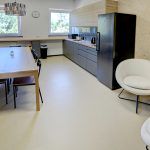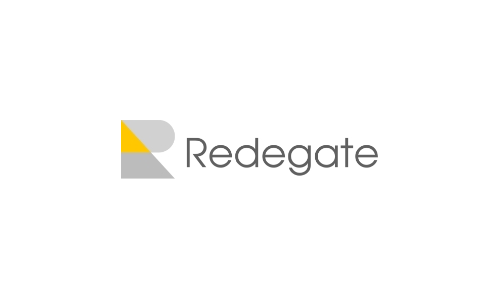
By Łukasz Ostas, attorney-at-law, Gessel

When discussing the energy transition in Poland, attention is focused largely on construction of nuclear power plants, closing down coal pits, modernising the distribution grid, or developing renewable energy in general. Of course, each of these issues is important, and without appropriate measures to implement them, the energy transition will fail.
That said, public discourse in Poland tends to omit the topic of local energy communities. Which is a pity, in that they hold great potential for remedying some of the problems of the Polish energy sector.
We are far behind Europe
It is estimated that over 9,000 energy communities are currently in operation across the EU. Usually composed of a number of individual solar or wind micro-installations, these energy communities produce energy for the needs of their members, selling any excess. In Poland, meanwhile, the number of investments that could be classified as local energy communities is estimated at between 100 and 200 – hardly an impressive number. Why?
Overregulation
As matters presently stand, the Polish legal systems envisages six forms of energy communities: a tenant prosumer, a collective prosumer, an energy cluster, an energy cooperative, as well as citizen energy communities and energy communities (within the meaning of the EU RED II Directive). All of these forms are based on at least two state acts.
This is where the first problem arises – the multitude of complex regulations which are difficult to apply in practice. For example, in the opinion of many experts, there is no practical justification for insisting that the energy cooperative and the civic energy community be distinguished as two discrete institutions. Due to their nature, the experts argue, they could just as well constitute a single type, regulated by a single act.
Then there is the pragmatic aspect – the more complicated the regulations, the more difficult they are to understand without professional support, which may deter potential investors and, at the same time, contradicts the very idea of citizen energy.
Inhibiting potential
The volume and complexity of regulations is one thing, but their content is another. Let us consider, for instance, energy cooperatives. Polish law defines the object of their operations as generating electricity, biogas, or heat for their own use, and any excess energy produced by them cannot be sold, but is transferred to the distribution network, from which 60% of the stored energy can then be reclaimed. They may cover an area of up to three rural or rural-urban municipalities, and the maximum power of energy generated cannot exceed 10 MW.
The legislation on energy cooperatives teems with contradictions. It should be appreciated that the status of all members of the cooperative has been equalised – their votes have equal weight, regardless of their size or share, which prevents single members from dominating the cooperative. Cooperatives can also be exempted from certain energy fees. On the other hand, the prohibition on selling excess energy is unhelpful. The cost of storage on the national grid of up to 40% also does not seem justified. Moreover, limiting the cooperatives’ area of operation to only rural and urban-rural municipalities unnecessarily excludes many attractive regions, such as the former mining heartlands in Silesia.
Some of the disadvantages of energy cooperatives are to be eliminated by citizen energy communities as a result of implementation of the EU’s Renewable Energy Directive II (RED II). In particular, sale of the energy produced will be allowed, and their area of operation will not be artificially narrowed. It is regrettable that the new regulations will take effect only in August 2024.
Lack of incentives
As already mentioned, in the EU there are already thousands of energy communities, while in Poland the number is several times smaller, with the energy clusters in operation counted in the dozens. The number of energy cooperatives is 19, and of collective prosumers is just one. Citizen energy communities will not be seen for almost another year.
These numbers may seem surprising, especially if we recall the huge boom in micro-photovoltaic installations in recent years. Ironically, this is one of the reasons why the development of local energy communities has been so slow. The high number of individual prosumers translates into a heavy burden on energy networks, which are approaching the limits of their capacity. This, in turn, is resulting in an increase in the number of refusals by energy companies to connect new installations, including collective ones, to the grid.
Moreover, there is a lack of well-organised, long-term, large-scale information campaigns to promote establishment of local energy communities. Experts also note insufficient financial support from the state, which would be very useful especially at the initial stages of local energy community development.
The importance of local energy communities to Poland’s energy transition
The legal situation discussed above does not inspire optimism. Quite disappointing, that, seeing as there is untapped potential in local energy communities.
Firstly, they could do much to relieve the strain on power grids. Poland’s energy infrastructure is outdated and inefficient. Local energy communities can remedy this problem to a certain extent, since the energy they produce will be distributed to users located a short distance from the installation.
Secondly, security. Infrastructure critical to the functioning of a country is a target for potential attackers. The cyber-attack on the Polish railway traffic safety system in August 2023, which immobilised trains for hours, is an example. Local energy communities favour the dispersal of energy infrastructure. The more fragmented the power infrastructure, the more difficult it will be to cause a country-wide paralysis of the power grid.
Thirdly, the environment. Poland still produces most of its energy from coal. This has grievous effects for the environment and a concrete financial dimension, if only because of the need to pay high fees for CO2 emission certificates. The first nuclear power plant in Poland will go online 10 years from now, at the earliest. Local energy communities, on the other hand, can be organised much more quickly and at a lower cost. There are also other benefits, such as lower energy bills for community members and the creation of new jobs.
Fingers crossed…
During the recent election campaign, the political parties most likely to form a government in December promised a number of facilitations for the creation of local energy communities. Let us hope that these promises will be kept, because numerous and well-organised energy communities are as needed in Poland as the much-touted nuclear power plants.























